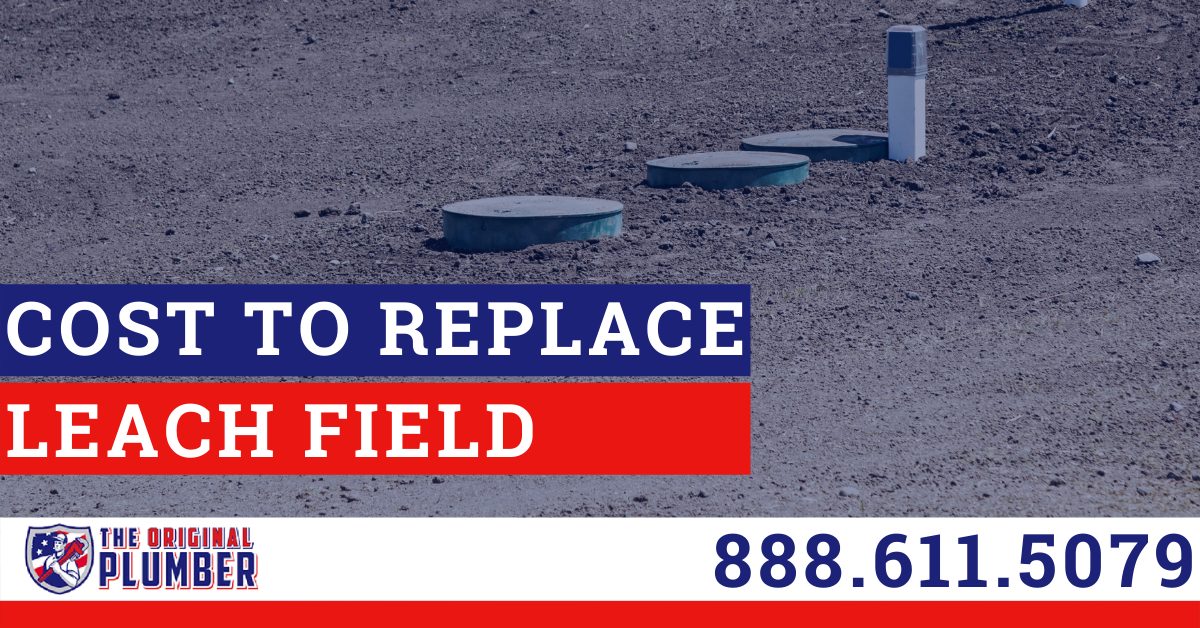Your leach field plays a very important role in your septic system. Also known as a drain field, it’s also one of the largest components. It returns clean, filtered wastewater to your water table before it rejoins the water cycle.
But if you’re in need of a new leach field, you don’t want any surprises – it can be one of the most expensive repairs if you have a septic system. Since it is so expensive, it’s important to maintain proper maintenance to avoid costly repairs in the future.
Leach fields should last around 20 years if maintained properly. To avoid costly repairs, learn more about how it works, what preventive measures you can take, and what to look for in case of an issue.
How does a leach field work?
Septic systems filter the liquid waste from the solid. Solid waste will sink to the bottom of the septic tank and forms a sludge. The liquid waste like oils and grease will float to the top. Helpful anaerobic bacteria eat away at the sludge. This breaks the particles down and creates a scum layer at the top of the surface.
This is where your leach field comes in. When solids are filtered through your septic tank, the filtered wastewater – also known as effluent – goes out into perforated pipes. Your field pipes bring the water into your drain or leach field.
Your drain or leach field’s gravel or soil further filters the effluent and removes impurities. Then, the effluent is percolated into the soil. This final process is what removes harmful coliform bacteria.
How much does it cost to replace a leach field?
Leach field replacements can be some of the most costly services. This is because of the timely process of digging out a new leach field prior to installing a new one. The exact price of your leach field replacement will depend on a few factors. This includes the size of the leach field and your septic system. On average, the price can run anywhere from $5,000 to $20,000.
Before you have your leach field replaced, consider how this will impact future decisions for your property. This includes how much landscaping you’ll do, landscaping costs, and how you’ll use the property if you decide to take on any home improvement projects. Let us know if this is a concern.
Why do leach fields fail?
There are many reasons that your leach field can fail, but the most common reason is improper maintenance. Another common reason is when too much water overloads the tank.
They can also become overwhelmed if you have a garbage disposal with your system. Frequently using a garbage disposal means you’ll need to have your tank pumped more frequently.
How much does a leach field rejuvenation cost?
Depending on the size of your drain field, rejuvenation can typically cost anywhere from $1,500 to $5,000. During a drain field replacement, your plumber will dig out the leach field before installing a new one.
What is the difference between rejuvenation and replacement?
Leach field rejuvenation can be done for drain fields that just need cleaning up. This is done when the leach field gets clogged, typically with a mixture of solid waste and wastewater. This process helps the soil absorb everything better. Leach field rejuvenations also include having your septic tank pumped.
How do you know if your leach field is failing?
There are a few warning signs that your leach field is failing. Keep an eye out for the following:
- Pungent odors: If you notice unexplained bad odors in your home, it could be a problem with your leach field. When the effluent and wastewater fail to properly drain, they accumulate on the surface of your soil. This results in a nasty, noticeable odor of sewage.
- Stagnant water: Excessive accumulation of the effluent can result in standing water. You’ll be able to see unexplained puddles of water in your yard if this is happening.
- Drainage issues: If you’re experiencing recurring clogs and backups in your home, then you may have drainage problems in your system’s leach field.
- Increased plant growth: If you notice the grass or weeds are growing faster in the area by your drain field, this is a sign your drain field is leaking faster than usual. The nutrients in the wastewater can fuel plant growth.
- Return of flow: Our team of licensed plumbers can detect reverse flow issues during routine septic tank pumping and maintenance. Some issues can only be detected from within!
If you notice any of these warning signs, give us a call immediately. We can treat the issue before it becomes a health risk for your family. If there is a sewage backup and immediate issue, we recommend checking your local health department website to learn what procedures you may specifically need to follow, as some factors can vary by location.
Save Money With Routine Maintenance & Septic Tank Repair Services
Scheduling routine septic tank maintenance and having your tank pumped can prevent costly issues like this in the long run. During routine septic pumping, we can detect issues that need to be addressed before they grow into larger problems.
We can also catch potential issues during a septic system inspection, where we can determine if you also need a new septic system. We can also determine if you just need to replace system components. The average cost of septic tank repair is around $600 to $2,000. But major repairs can become more costly.
How much does it cost to repair or replace a septic tank?
Repair or replacing a septic tank is typically much more affordable than a leach field replacement.
For example, the average septic tank replacement cost ranges from $1,500 to $5,000. This includes the septic tank installation cost and labor costs.
If it’s as simple as a broken pipe or septic pump, however, that will only run you a few hundred dollars. This is why routine maintenance is critical! It helps homeowners detect repairs to prevent unnecessary and costly repairs. Proper upkeep can keep your overall septic system cost down.
Replacement costs depend on the type of system. Septic system types all vary in cost. An aerobic septic system or mound septic system is much pricier than anaerobic systems, for example.
How much does a septic tank cost?
Most septic tanks cost anywhere from $1,500 to $5,000. But some types of septic tanks can cost as much as $10,000 to $20,000 dollars.
The price can depend on the material costs. A concrete septic tank is cheaper, for example, but can crack. Fiberglass septic systems can be a little pricier than concrete tanks, but won’t crack or expand. Plastic septic tanks are also an affordable option and are durable. Many local building codes do not allow steel septic systems, no matter how well they are made of, these can eventually rust, corrode, and collapse.
Reliable Septic Company in the Atlanta Area
At The Original Plumber & Septic, our team of licensed professionals is available 24/7. We understand that emergencies happen so we are here for you when you need us! We service the Atlanta metro area.
We offer fair, transparent pricing. From septic system installation to leach field replacements, there are no hidden fees!
We do everything in our power to make sure the process is as simple as possible for you. We know how much your property means to you, so we handle it with care and do the job properly.
If you suspect you need your leach field replaced or repaired, give our septic tank pumping company a call. Our team is here to help with any septic system repairs you may need. We’re proud to be one of the highest-rated septic tank repair companies in Northern Georgia.




